
P1 LED lever meter Sensor S1 S3 Red is on: Output OFF Green is on: Output ON S4 S2 + P2 Red 1 Gap too big S1, S2: Fixed orifice S3: Variable orifice (Set via adjustment knob) S4: Detection nozzle Red 2 Green 1 BEST POSITION The bridge circuit is constructed as shown in the diagram. Position the work piece in front of the nozzle (S4).
.-230 Ryan Way, South San Francisco, CA 94080-6370-Main Office: (650) 588-9200-Outside Local Area: (800) 258-9200-www.stevenengineering.com Acceleration Stroke Cushion seal RHC MK(2) 15 m/s2 5 m/s2 (REB) (REA) RS Q G High precision guide type: REAHT (Double axis) High precision guide type: REBHT (Double axis) RS H A REB REA RZQ High precision guide type: REAH (Single axis) High precision
Maximum acceleration: 2000mm/s2 Positioning distance (mm) 1 1000 500 100 10 10 0.5 100.5 50.5 10.5 1.5 100 0.5 10.5 5.5 1.5 0.6 Speed (mm/s) 500 0.5 2.7 1.7 0.9 0.6 1000 0.5 1.9 1.4 0.9 0.6 A B C D Values will vary slightly depending on the operating conditions.
When selecting the overhang, refer to "Calculation of Guide Load Factor" or the Electric Actuator Selection Software for confirmation, http://www.smcworld.com Dynamic Allowable Moment Acceleration/Deceleration 1000 mm/s2 3000 mm/s2 5000 mm/s2 Orientation Load overhanging direction m : Work load [kg] Me: Dynamic allowable moment [Nm] L : Overhang to the work load center of gravity [mm] Model
Parts list * is different from standard type (C(D)S2) No.
Max acceleration/deceleration [mm/s2] Positioning repeatability [mm] 0.01 Lost motion[mm] Note3) 0.05 Lead [mm] 20 12 6 24 16 8 30 20 10 Impact/Vibration resistance [m/s2] Note4) 50/20 Actuation type Ball screw (LEKFS)Ball screw + Belt (LEKFSR/L) Guide type Linear guide Operating temperature [] 5 to 40 Operating humidity [%RH] 90 or less(No condensation) Motor output [W]/size [mm] 100W/40
Impact/Vibration resistance (m/s2) Note) 150/50 Enclosure Dustproof Note) Impact resistance: No malfunction from test using drop impact tester, to axis and right angle directions of main valve, each one time when pilot signal ON and OFF.
Standard Specifications VQ7 Compact yet provides a high flow capacity 1/4: C: 3.4 dm3/(sbar) Low power consumption: 1.8 W DC Fluid Air/Inert gas Maximum operating pressure Minimum operating pressure 1.0 MPa 0.1 MPa EVS Valve specifications Electricity specifications Ambient and fluid temperature 1.5 MPa Proof pressure VFN 10 to 60C (1) Non-lube (2) Non-locking push type (Flush) 150/50 m/s2
Address Description of bytes tion unit range Input Mode D0410 4 Target position [m] Note 1) 1 Note 1) No D0412 2 Positioning time [0.01s] 1 0 to 6000 No D0413 2 Speed [mm/s] 1 0 to 400 No D0414 2 Acceleration [mm/s2] 1 0 to 60 No D0415 2 Deceleration [mm/s2] 1 0 to 60 No 1 to 20, Pushing speed [mm/s] D0416 2 1 No 32768 to Note2) 32788 Thrust setting value Note 3) More than D0417 2 1 Yes [
External terminals (including the FE terminal) and enclosure screws Insulation resistance 10 M or more 500 VDC External terminals (including the FE terminal) and enclosure screws EN61131-2 compliant 5f<8.4 Hz 3.5 mm Vibration resistance 8.4f<150 Hz 9.8 m/s2 Impact resistance EN61131-2 compliant, 147 m/s2, 11 ms Mounting Through hole for M4 screw (2 pcs.)
without control unit and bracket mounted, Others 30 m/s2, whichever is smaller for 2 hours in X, Y, Z direction each (De-energized) Vibration resistance Without control unit and bracket mounted: 980 m/s2, Others: 150 m/s2 in X, Y and Z direction, 3 times each (De-energized) Nil: Rc 1/8, N type: NPT 1/8, F type: G 1/8 4-core, oil resistant, cable (0.64 mm2) with M12, 4-pin pre-wired connector
The operating time for D-J51 is 2 ms or less and for D-P3DW/P4DW are 40 ms or less. 4) 980 m/s2 for the trimmer type sensor section, 98 m/s2 for the amplifier section.
Movement Load : Angular acceleration F: Pressing force (N) T f = F x l (Nm) . 2 = (rad/s 2) Load Static torque calculation t 2 g = 9.8 m/s2 Ts = F x l (Nm) l : Rotation angle (rad) Lever t : Rotation time (S) Axis Rotary actuator Axis Allowable Load Application of the load on the axial direction is tolerated if no dynamic load is generated and the values are within what is shown in the
Do not drop, bump or apply excessive impacts (300m/s2 or more for reed switches and 1000m/s2 or more for solid state switches) while handling. Although the body of the switch may not be damaged, the inside of the switch could be damaged and cause a malfunction.
Static torque calculation Tf = F x L (Nm) Load . g = 9.8m/s2 F: Pressing force (N) : Angular acceleration Load .
Do not drop, bump, or apply excessive impacts (300 m/s2 or more for reed switches and 1000 m/s2 or more for solid state switches) while handling. Although the body of the switch may not be damaged, the inside of the switch could be damaged and cause a malfunction. 2. Do not carry a cylinder by the auto switch lead wires. Never carry a cylinder by its lead wires.
Movement Load : Angular acceleration F: Pressing force (N) T f = F x l (Nm) . 2 = (rad/s 2) Load Static torque calculation t 2 g = 9.8 m/s2 Ts = F x l (Nm) l : Rotation angle (rad) Lever t : Rotation time (S) Axis Rotary actuator Axis Allowable Load Application of the load on the axial direction is tolerated if no dynamic load is generated and the values are within what is shown in the
Movement Load : Angular acceleration F: Pressing force (N) T f = F x l (Nm) . 2 = (rad/s 2) Load Static torque calculation t 2 g = 9.8 m/s2 Ts = F x l (Nm) l : Rotation angle (rad) Lever t : Rotation time (S) Axis Rotary actuator Axis Allowable Load Application of the load on the axial direction is tolerated if no dynamic load is generated and the values are within what is shown in the
Do not drop, bump, or apply excessive impacts (300 m/s2 or more for reed switches and 1000 m/s2 or more for solid state switches) while handling. Although the body of the switch may not be damaged, the inside of the switch could be damaged and cause a malfunction. 2. Do not carry a cylinder by the auto switch lead wires. Never carry a cylinder by its lead wires.
Do not drop, bump, or apply excessive impacts (300 m/s2 or more for reed switches and 1000 m/s2 or more for solid state switches) while handling. Although the body of the switch may not be damaged, the inside of the switch could be damaged and cause a malfunction. 2. Do not carry a cylinder by the auto switch lead wires. Never carry a cylinder by its lead wires.
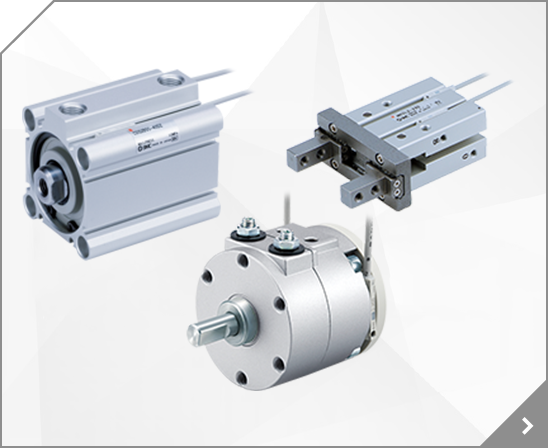


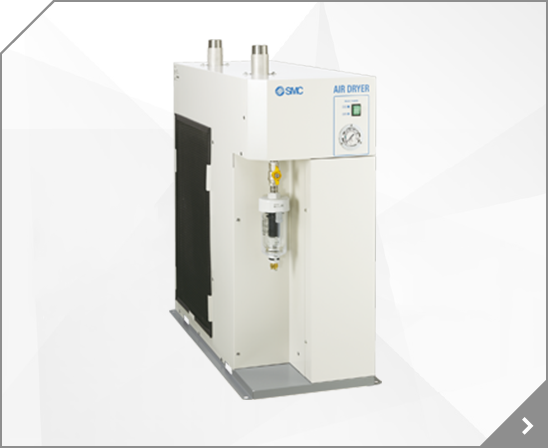
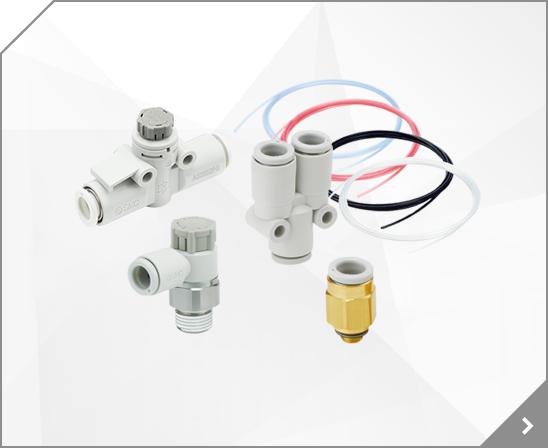
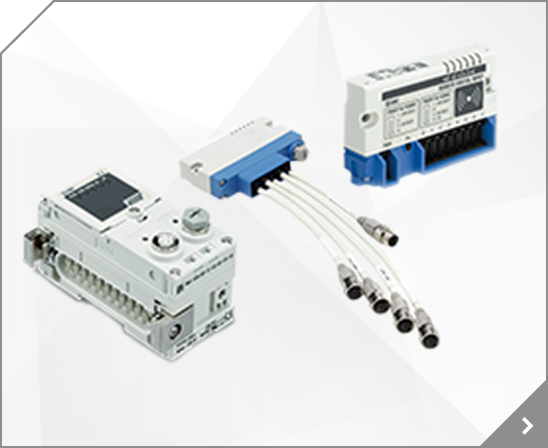
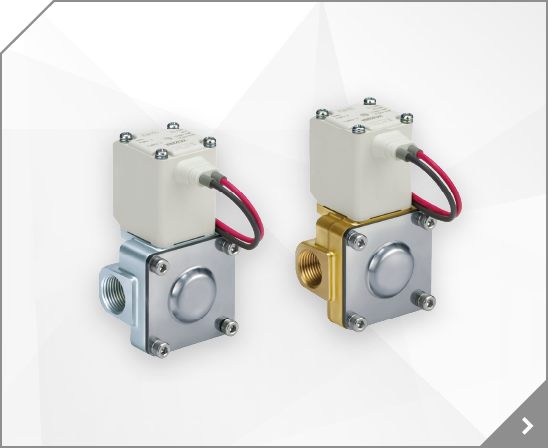
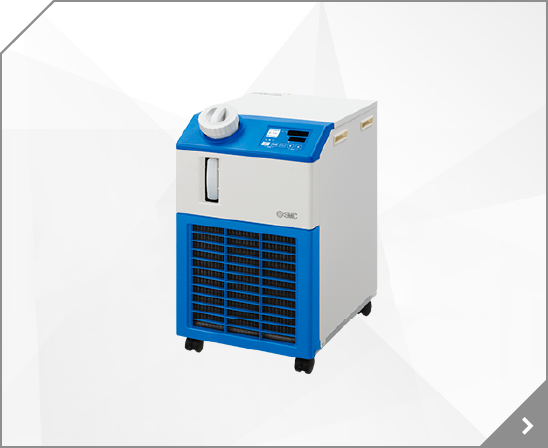
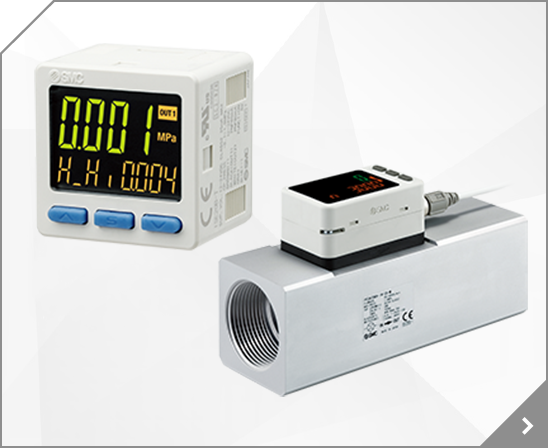
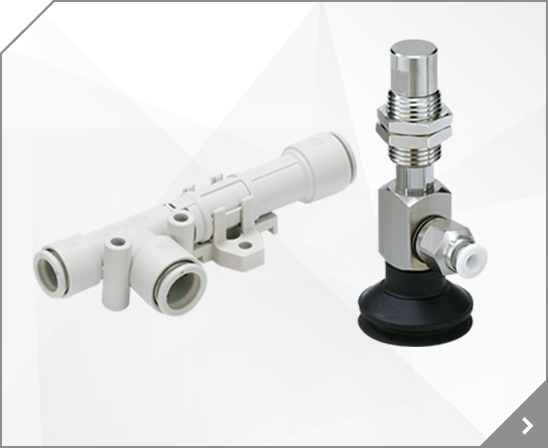

 SMC Electronic Switch Series Variations
SMC Electronic Switch Series Variations